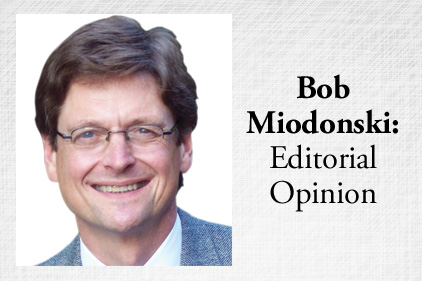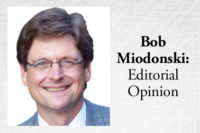More innovations for plumbing
Next year’s Emerging Technology Symposium will focus on using water wisely.

You probably have heard the story about a former director of the U.S. Patent Office. In 1899, the story goes, he recommended closing the office because “everything that can be invented has been invented.”
As with many good stories, this one isn’t true. The patent office in 1899 reported an increase of 3,000 patents from the previous year. What the same patent office director actually said in 1902 is a bit more uplifting: “In my opinion, all previous advances in the various lines of invention will appear totally insignificant when compared with those which the present century will witness. I almost wish that I might live my life over again to see the wonders which are at the threshold.”
A similar misconception has followed the plumbing industry, which hasn’t always enjoyed the best reputation for embracing new technology. Or as Dan Holohan puts it, “Plumbers will try anything new as long as their grandfathers tried it first.”
Dan’s line always gets a laugh when he uses it in one of his workshops. And we all know it’s not exactly true either when you consider all the advances the plumbing-and-heating industry has made with products that use water and energy more efficiently.
While some people believe we’ve gone about as far as we can go with low-flow toilets and showerheads, for example, I’m certain more innovations are on the way. In fact, you’ll get a chance to hear about them — and even present your own — during a plumbing industry event next April.
The fourth International Emerging Technology Symposium will be presented April 23-24, 2014, in Arlington, Va. The event will bring together plumbing contractors, engineers, manufacturers, code officials, and water efficiency experts to introduce technologies for the plumbing and mechanical industries. We’ll also discuss how policy initiatives can drive the introduction of these technologies to market and advance the cause of water and energy efficiency.
I say “we” because I’ll help to moderate the symposium as I did in Chicago in 2008; Ontario, Calif., in 2010; and Bethesda, Md., last year. As moderator, I get to introduce the real experts to the audience, ask questions and share my thoughts on the proceedings at the end of the second day.
Along with the new technology that will be introduced, what will be new at next year’s ETS will be the level of support from organizations in the plumbing industry. The International Association of Plumbing and Mechanical Officials and the World Plumbing Council have been the primary sponsors of the past three symposiums. Joining them next year will be the American Society of Plumbing Engineers; Canadian Institute of Plumbing & Heating; Mechanical Contractors Association of America; Plumbing-Heating-Cooling Contractors – National Association; Plumbing Manufacturers International; and the United Association.
You don’t have to belong to one of these groups to attend next year’s ETS. As a participant, you’ll get the chance to view the presentations and take part in the discussions surrounding the emerging technologies related to plumbing, mechanical and HVAC systems. To register, you can visit https://forms.iapmo.org/ets.
You even will have an opportunity to take a more active role. The ETS organizers have asked me to get the word out that they are seeking presentations from experts in the following fields: water, sanitation and health; water and energy efficiency; water reuse; solar and other renewable energies; water quality; fat, oil and grease discharges; advancements in mechanical systems; plumbing research initiatives; laws, regulations and policy development; and new efficiencies in HVAC. To submit a presentation abstract, contact Maria Bazan at maria.bazan@iapmo.org or call 877/427-6601.
Whether you’re a presenter or a participant, attending next year’s ETS will be a worthwhile experience. As with any industry meeting, much of the value will come from networking with other plumbing industry professionals between the presentations and during social events.
Judging from the list of sponsoring organizations and the topics that will be covered, the people attending next year’s ETS will be a diverse group from different corners of the plumbing industry. One clear message that struck me after I moderated the first ETS is the importance of these different segments within the plumbing industry talking with one another.
Plumbing engineers, contractors, manufacturers, inspectors, labor and code officials need to communicate not only during two-day industry meetings, but also as they go about their daily work. For new technology to be effective, it must be designed, manufactured, installed, utilized and maintained properly.
I hope to see you there.
HELPFUL LINKS:
Looking for a reprint of this article?
From high-res PDFs to custom plaques, order your copy today!






